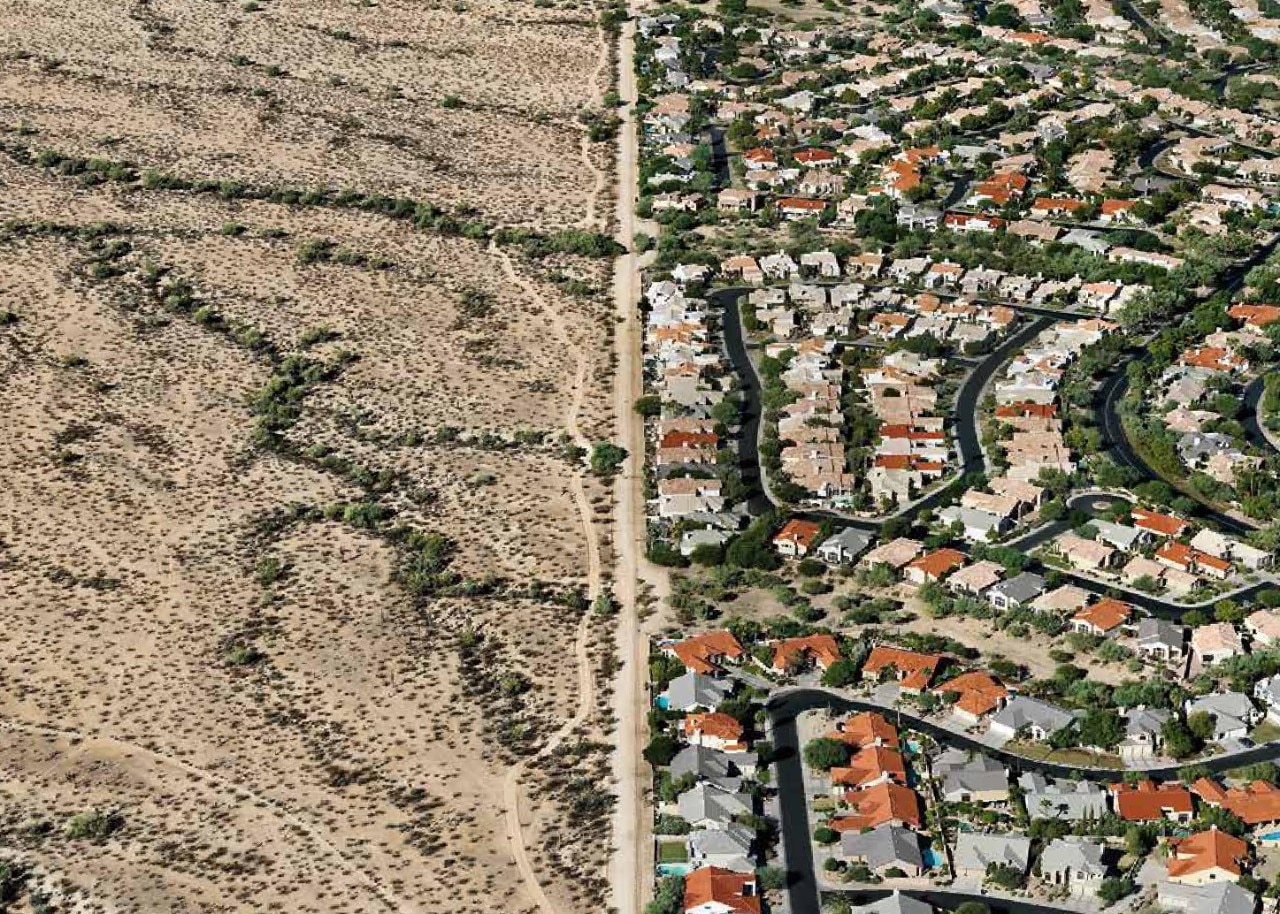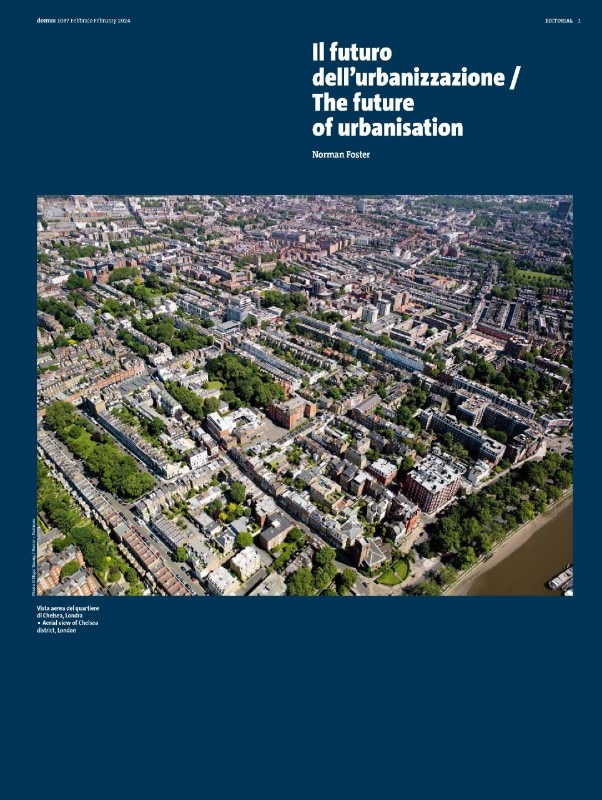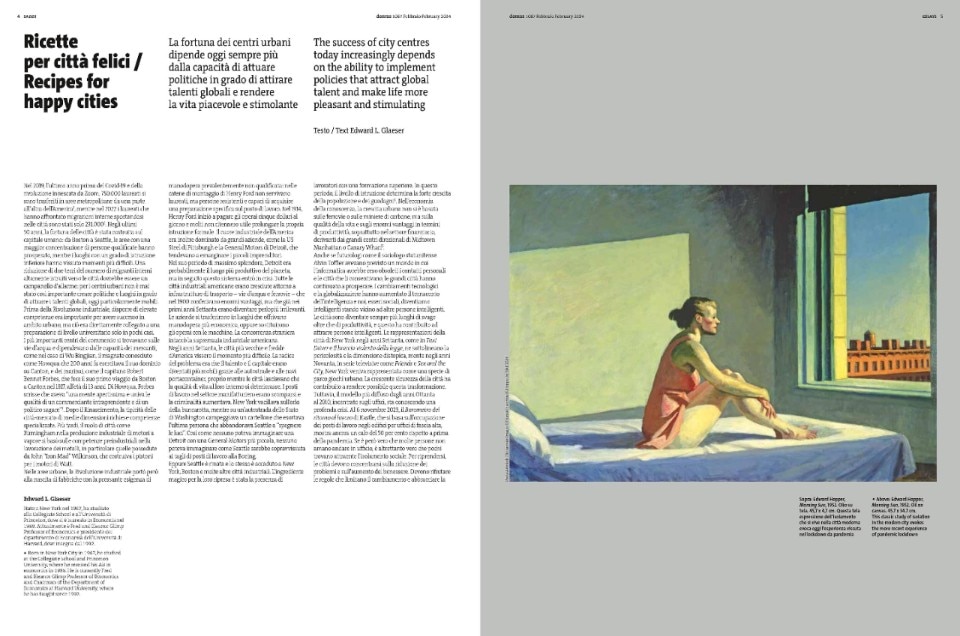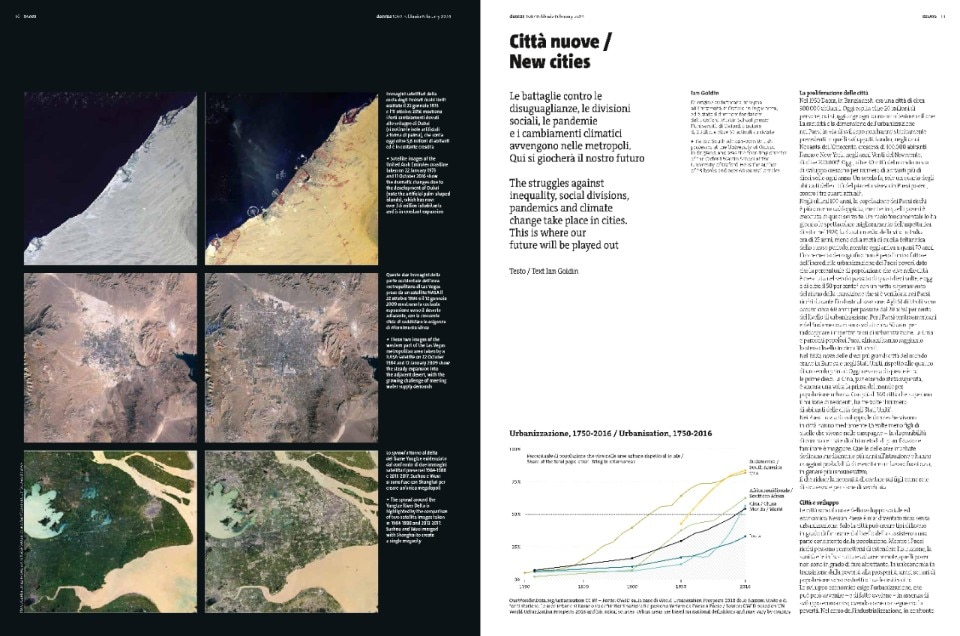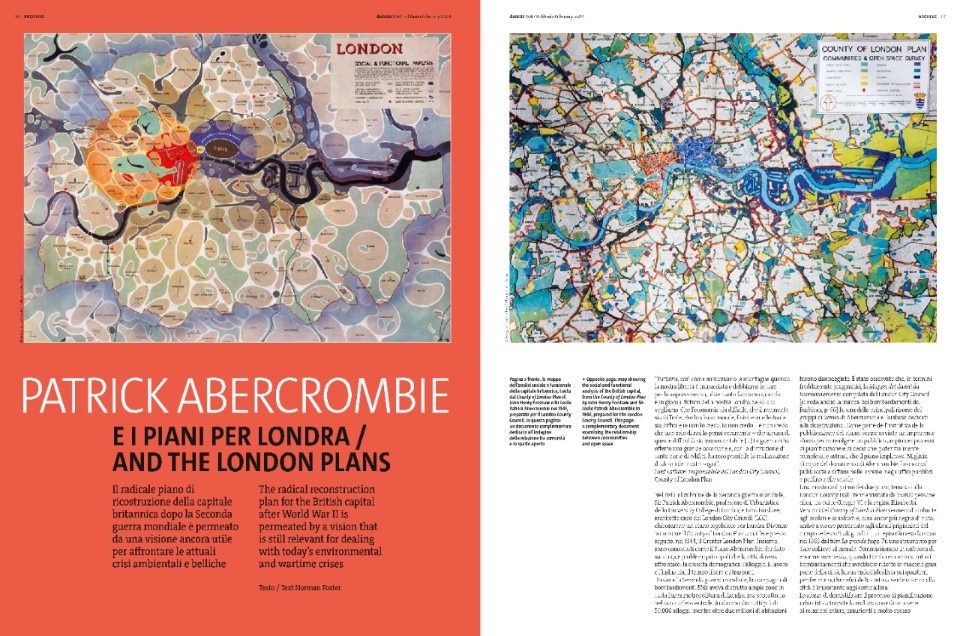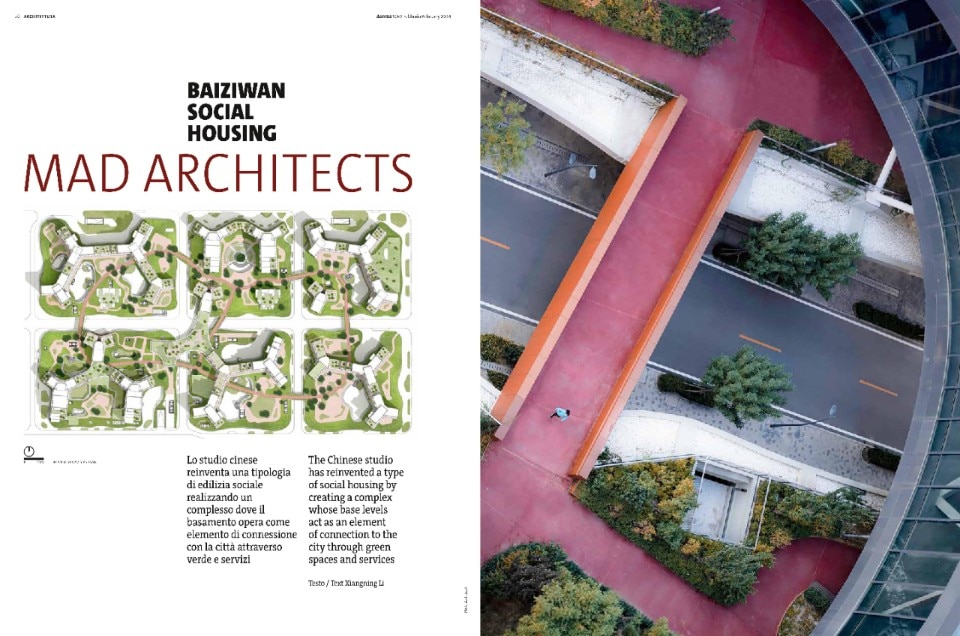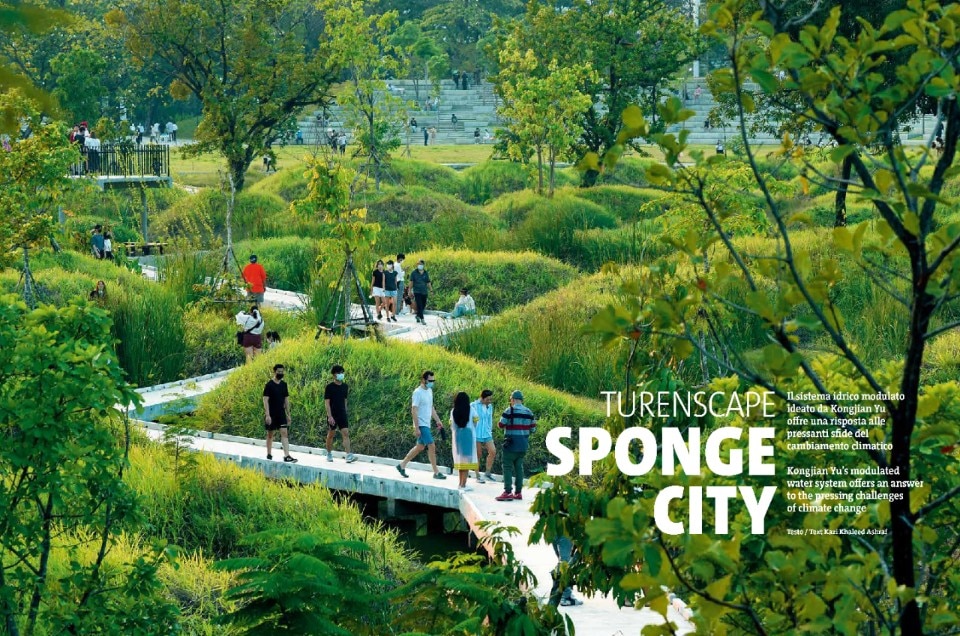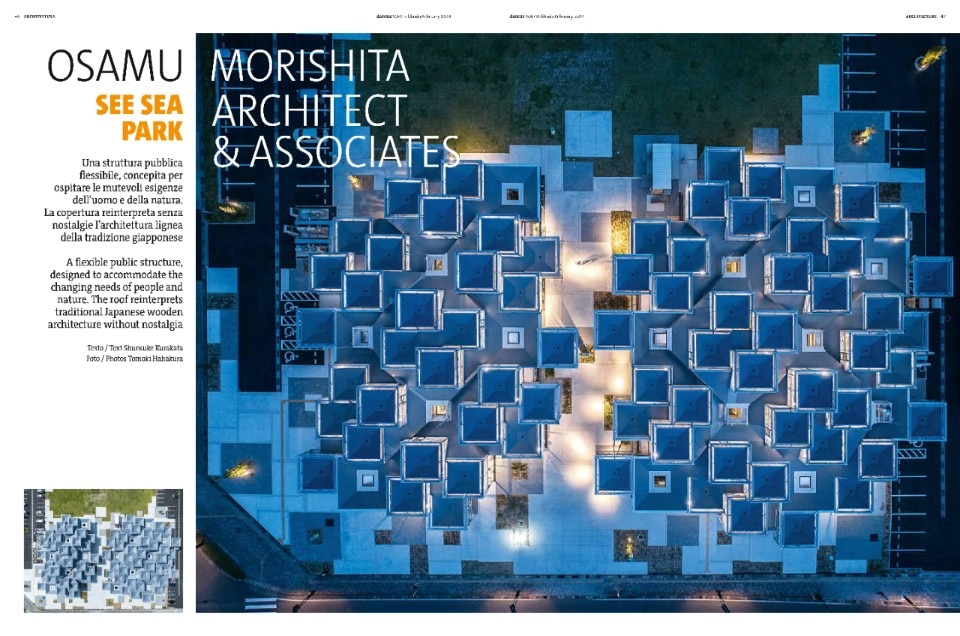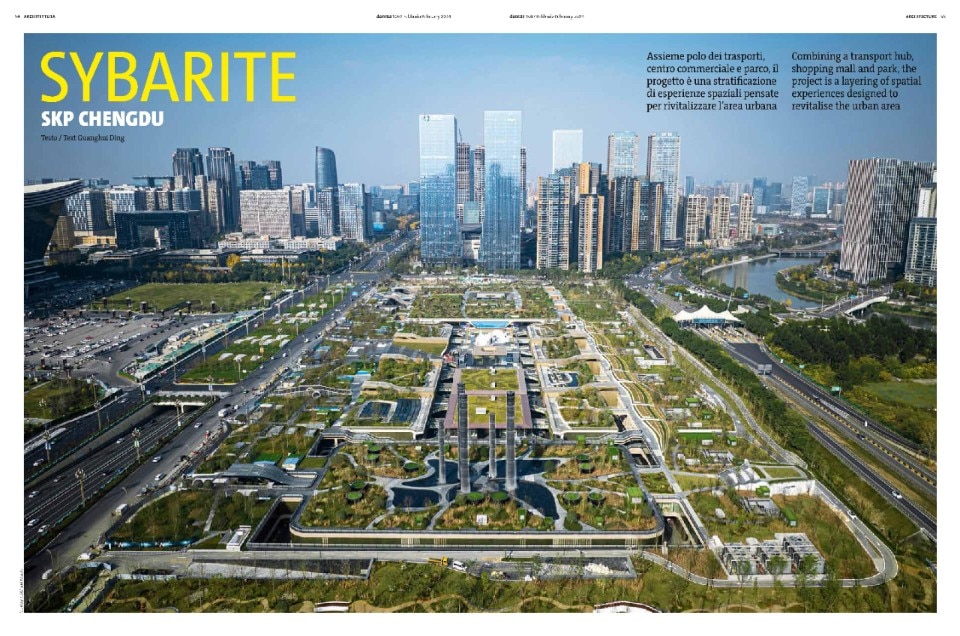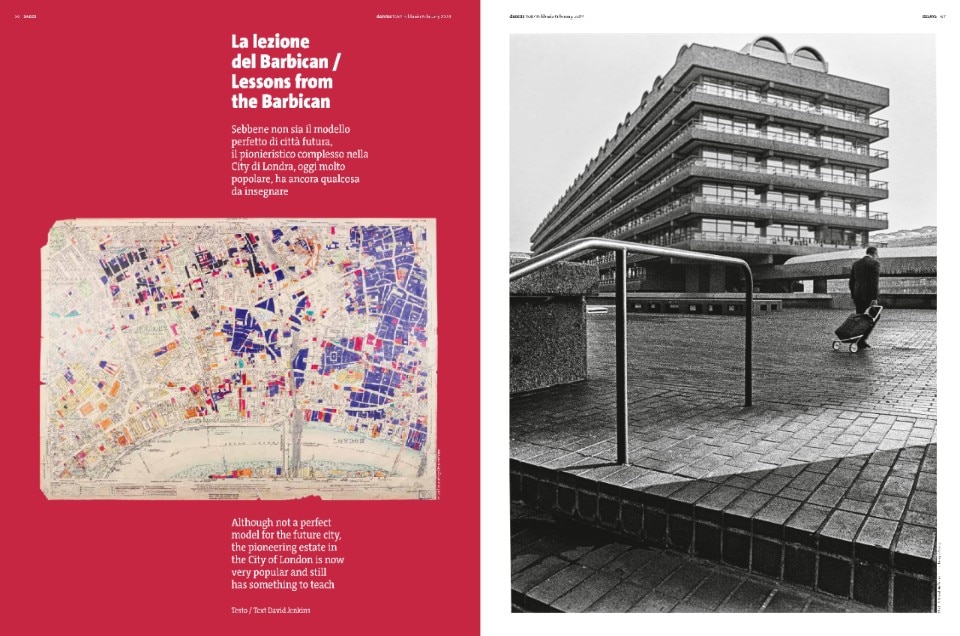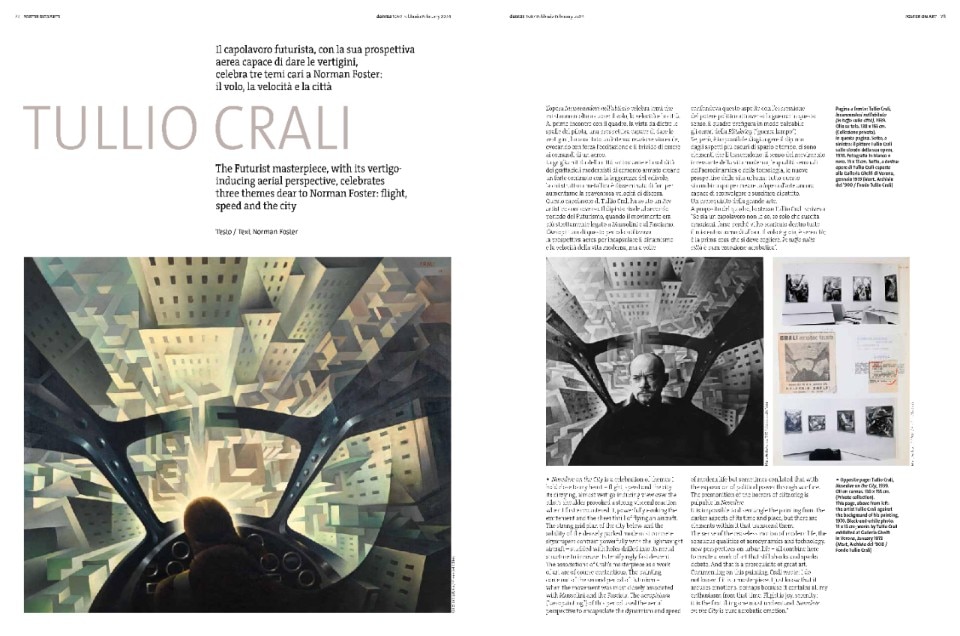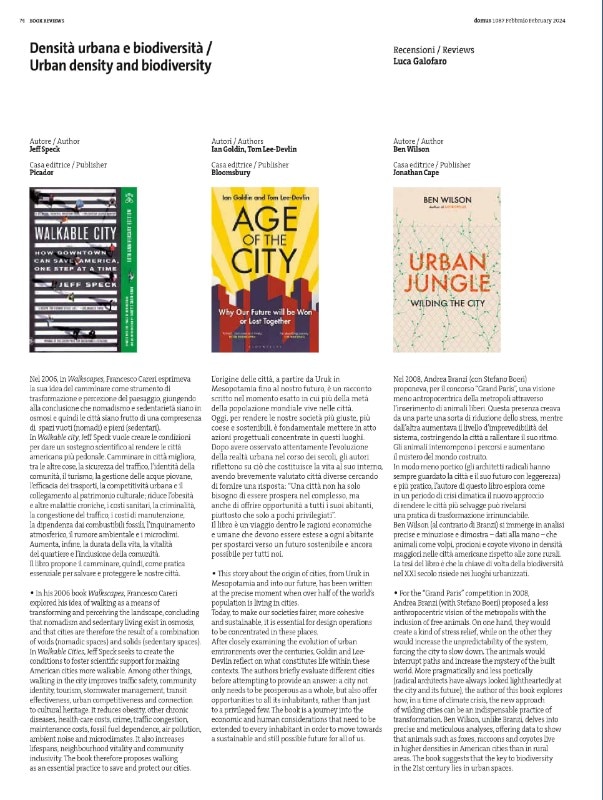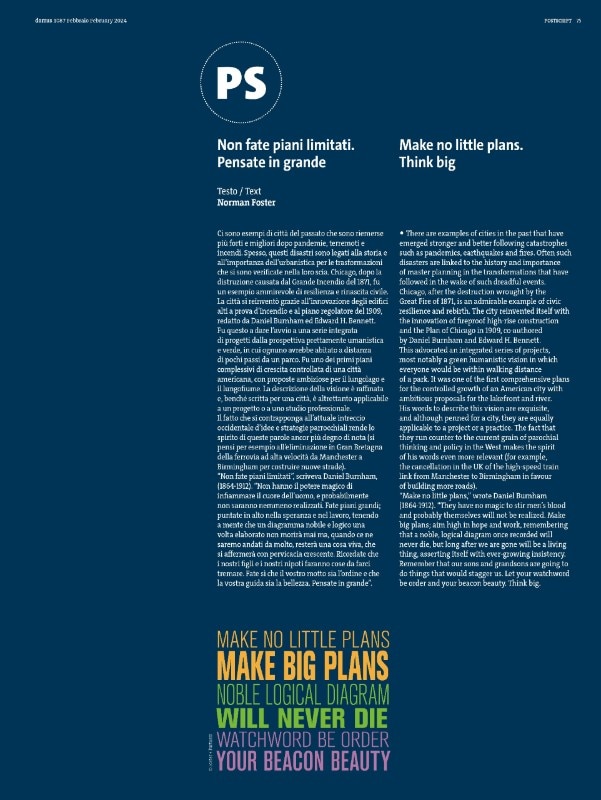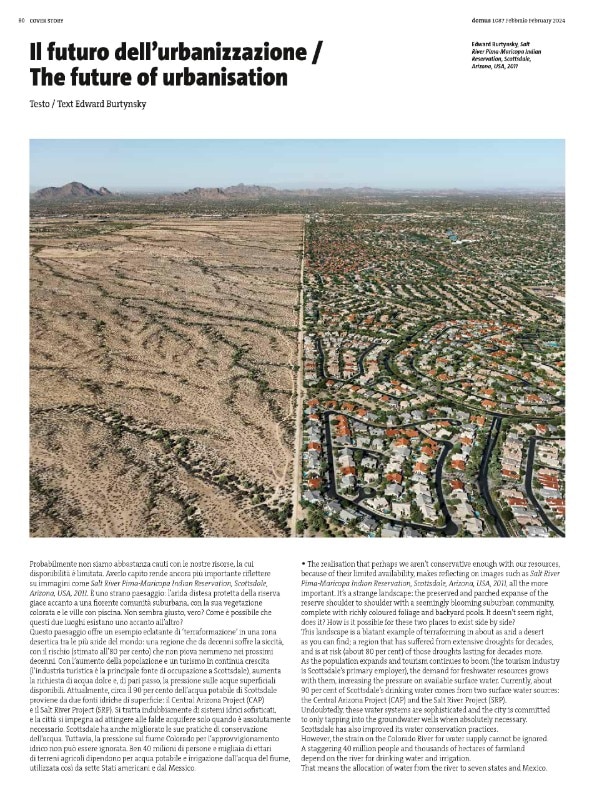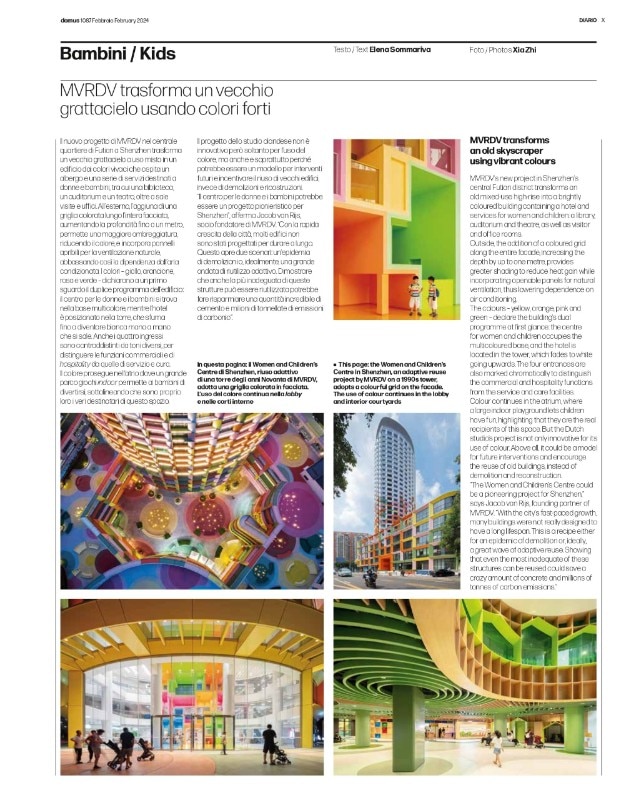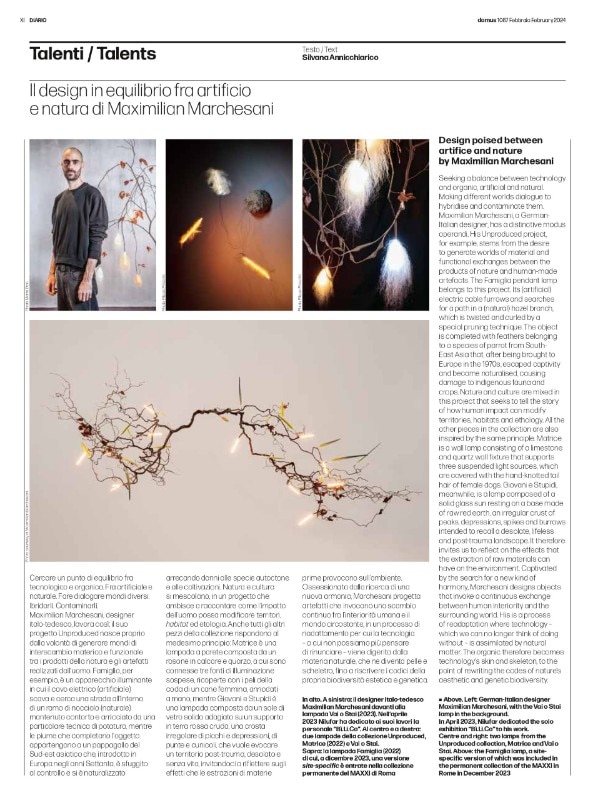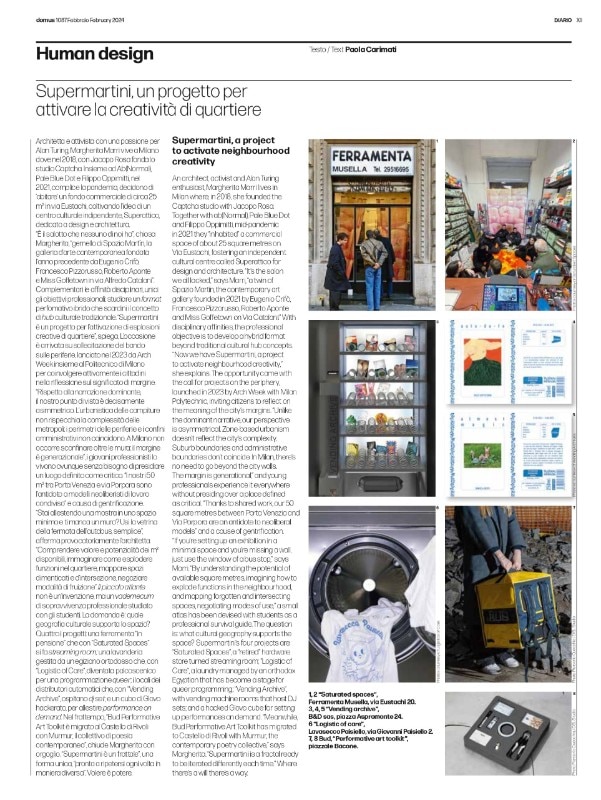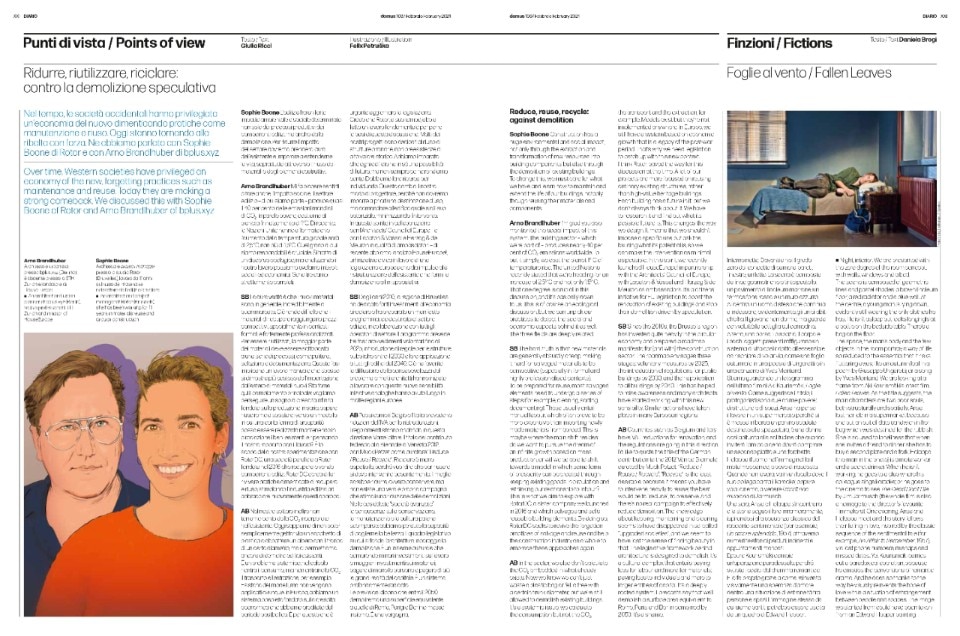“Throughout my six decades of professional practice, I have been consistent in my belief that the key to a truly sustainable future is through our cities – both the improvement of existing ones and the creation of new ones” Norman Foster writes in the Domus 1087 editorial. Focusing on the future of urbanization, the issue opens with essays by Edward L. Glaeser, Professor of Economics and the Chairman of the Department of Economics at Harvard University, and Ian Goldin, Professor of Globalization and Development at the University of Oxford. Both Glaeser and Goldin profile the contemporary city, identifying key areas for improvement to make it thrive.
The reconstruction plan of London after World War II by Patrick Abercrombie is the subject of a historical investigation. The County of London Plan and the Greater London Plan are permeated by a vision that is still relevant today and are based on the proximity of the residents of the capital to the high street and are still today an important lesson of urban design.
The section on architecture features the work of MAD Architects, Turenscape, Osamu Morishita Architect & Associates, and Sybarite. These complex and extensive urban interventions are illustrated by local critics Xiangning Li, Kazi Khaleed Ashraf, Shunsuke Kurakata, and Guanghui Ding. They share landscape, ecosystemic, and climatic strategies that engage with different cultural and social contexts, indicating possible future directions for urban projects.
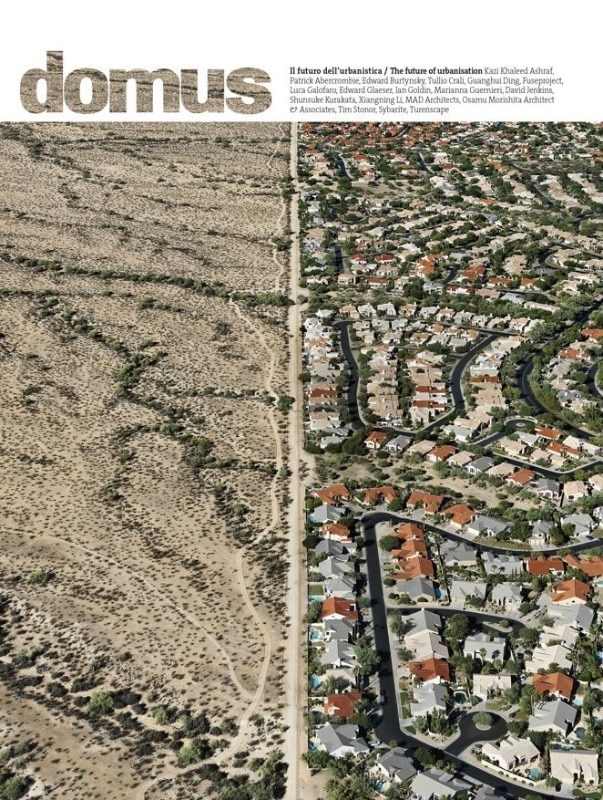
In the Design section, Marianna Guernieri describes the portable solid-state battery designed by Fuseproject for Yoshino Technology. In addition to imbuing the object with almost a vintage radio-like feel, Yves Béhar’s firm has also fine-tuned the interface, brand identity, and packaging, defining a new standard for the home energy sector.
On the other hand, architect, writer, and editor David Jenkins unveils the defining aspects of the Barbican Estate urban intervention. Powell and Bon recounts Chamberlin’s project transformation over the past 40 years, how the spaces have been lived in and altered, revealing both historical challenges as well as the successes that still make it interesting today.
In Foster on Art, the British architect chose a 1939 painting. Nosedive on the City by Tullio Crali, which combines three themes that are dear to Foster: flight, speed, and the city. In Book reviews, Luca Galofaro reviews three books – by Jeff SpeckIan Goldin, Tom Lee-Devlin, and Ben Wilson – that talk about different ways to put together two apparently conflicting urban needs: density and biodiversity. In Postscript, Foster urges the readers to “think big” when it comes to adversities. If fact historically, cities have emerged stronger from destructive wars or even natural disasters. For his call, Foster is helped by Daniel Burnham’s words, who conceived Chicago's master plan (1909) together with Edward H. Bennett after the Great Chicago Fire in 1871.
Closing the issue is an interview with Tim Stonor on space syntax: a discipline for understanding human behavior in space and a tool for making functional and prosperous cities.
The Cover Story tells the story behind Edward Burtynsky's cover photo. This second Foster Direction cover story is a detail of the Salt River Pima-Maricopa Indian Reservation, Scottsdale, Arizona, USA, 2011 shot that shows the sharp spatial division between a Native American reservation and a suburban area of the small town of Scottsdale – one of the driest areas in the world, where good water resource management is essential.
In the Diario, Javier Arpa talks about Johannesburg, South Africa, in Emerging territories, Silvana Annichiarico writes about Maximilian Marchesani’s design, and Paola Carimati focuses on Supermartini, a Milan-based project that aims to be an alternative to the prevailing model of the traditional cultural hub.
Among the featured projects, Elena Sommariva presents the skyscraper in Shenzhen, renovated by MVRDV with bold colors, while Giulia Ricci writes about the workspace expansion project by Juan Alberto Andrade in Guayaquil, Ecuador. In Points of view, Giulia Ricci engages in a conversation with Sophie Boone from the Belgian studio Rotor and Arno Brandlhuber, co-founder of bplus.xyz in Berlin, to discuss the rediscovery of maintenance and reuse practices as strategies to counter speculative demolition.


